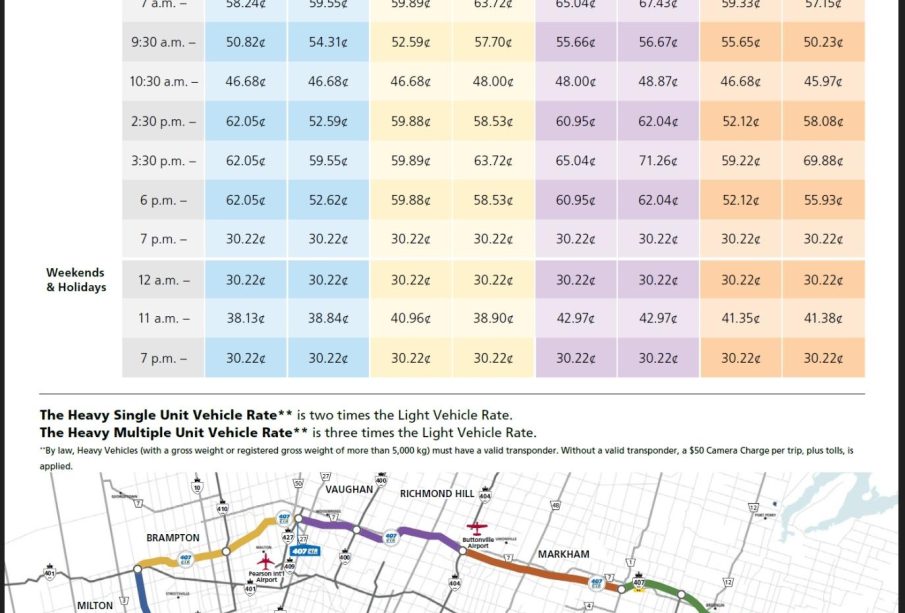Understanding the 407 ETR Toll Highway in Ontario

Introduction
The 407 ETR (Express Toll Route) is a vital toll highway in Ontario, Canada, that plays a significant role in the province’s transportation landscape. This toll road, which spans 108 kilometers from Windsor to Pickering, provides a much-needed alternative to congested routes, supporting the efficient movement of goods and people. With increasing traffic demands and a growing population, understanding the implications and updates surrounding the 407 ETR is more crucial than ever for commuters and businesses alike.
Overview of 407 ETR
The 407 ETR first opened in 1997 as a privately operated toll highway. It was the first of its kind in Canada and utilizes state-of-the-art technology for electronic toll collection, allowing vehicles to travel without stopping to pay tolls. The highway is equipped with cameras and sensors to record the license plates of vehicles using the road, ensuring a seamless experience for drivers.
Recent Developments
In recent years, the 407 ETR has experienced changes in toll rates and operational management. As of late 2023, the toll rates have remained a contentious issue, with many commuters voicing concerns about affordability. In 2022, the management announced a 5% increase in rates, a move aimed at covering increased operational costs. This price increase has led to discussions among stakeholders, including the provincial government, who are examining the fairness and accessibility of tolls for residents.
Additionally, as the province pushes for greener transportation options, the 407 ETR has begun integrating initiatives to promote eco-friendly vehicles. These include discounted toll rates for electric vehicles, encouraging more Ontarians to consider sustainable commuting options.
Future Implications
The future of the 407 ETR remains uncertain as demand for transit solutions continues to grow. Analysts predict that without improvements in public transit infrastructure, the highway will face even more congestion. There are calls for the provincial government to reconsider the management and operation of the toll road, as increasing toll prices could drive more drivers to alternative routes, ultimately negating the highway’s intended purpose of alleviating traffic stress on other major roads.
Conclusion
In conclusion, the 407 ETR is a critical infrastructure element for Ontario that addresses the challenges of transportation in a growing province. With ongoing discussions about toll rates and management practices, it is evident that both commuters and policymakers have a stake in ensuring this vital highway serves as an efficient and accessible route. Going forward, the integration of sustainable practices and fair pricing will be essential in shaping the future of the 407 ETR, as it adapts to the changing needs of its users.









